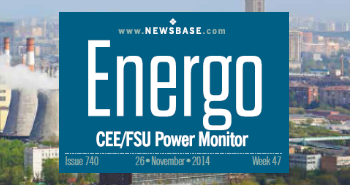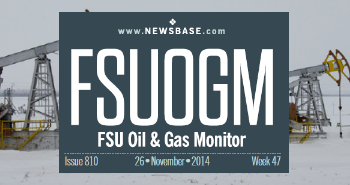Russia prepares $25bn initiative to substitute equipment and tech in the energy sector

The national project is set to cost RUB2.14 trillion ($25bn) to implement between now and the end of the decade.
WHAT: Russia is preparing a national initiative to achieve “technological sovereignty” in the energy sector.
WHY: The goal is to substitute imports of critical equipment and technology that used to be supplied mostly by Western companies.
WHAT NEXT: The success of this initiative will be critical for the development of Russia’s energy sector in the years ahead.
Russia’s flagship national initiative to achieve “technological sovereignty” in the energy sector, overcoming dependence on Western technology, is set to cost RUB2.14 trillion ($25bn) between now and the end of the decade, according to a government presentation seen by the Moscow-based Vedomosti newspaper.
Just over a third of this sum, some RUB730bn, will be covered with budget funds and the rest from alternative sources, Vedomosti reported on July 28. The initiative, known as New Nuclear and Energy Technologies, was presented at a government session by Prime Minister Mikhail Mishustin on July 2. It will comprise 10 federal projects that will “contribute to our country’s entry into the top ten in terms of the volume of scientific research and experimental design work, as well as an increase in the share of domestic spending on these purposes to at least 2% of GBP,” the prime minister said.
These projects could include a number aimed at developing nuclear energy technologies, according to the president, but the scope of the initiative also covers other areas of the energy sector, including the development of new equipment and technologies for the oil and gas industry, LNG, general electricity, solar and wind generation, as well as energy storage systems.
Domestic shortfalls
Western sanctions prohibiting involvement by contractors and equipment and technology providers in Russia’s oil and gas industry have so far done little to affect Russian oil and gas production – an area where local companies were already mostly proficient prior to Moscow’s invasion of Ukraine. But there has been a bigger impact on other segments, including LNG, oil refining, petrochemicals and power generation.
Russia was particularly dependent on foreign imports of technology and equipment in the LNG sector before the war, including for liquefaction, power generation and the construction of specialised LNG carriers for year-round navigation along the Northern Sea Route (NSR). This will make it harder for the country to advance new export projects, and even ensure the stable operation of existing facilities, such as Arctic LNG-2.
Russia is already constructing its own Arc7 ice-class LNG carriers at the Far Eastern port of Zvezda, with the first vessel expected to be ready for operation by the end of this year. Five carriers are under construction at the site, but it is unclear whether Russia can obtain all the necessary equipment to complete them, including high-tech membrane systems, most of which are built globally by France’s GTT.
As for oil refining, sanctions have made it harder for Russia to repair damage caused by Ukrainian drone strikes, and the modernisation of plants has come to a standstill because of the restrictions, with very few refiners at present planning any new major upgrade projects. Sibur, Russia’s leading petrochemical producer and which prior to the war was planning a rapid expansion, has now slowed its pace of development because of hurdles created by sanctions.
In electricity generation, Russia is not currently able to build turbines as powerful as those that were previously supplied by the likes of Siemens and General Electric. Foreign turbines already in operation in Russia will meanwhile require replacement sooner or later. The need to ensure the energy system’s stability was highlighted this month when large parts of southern Russia suffered power outages, triggering public protests. The lack of high-capacity turbines has also created challenges at the Arctic LNG-2 project. Russian companies Rostec and Power Machines are currently working on launching the industrial-scale production of such turbines.
Over time, the withdrawal from Russia of leading global oilfield service providers such as Halliburton and Baker Hughes, both of which have sold their businesses in the country, may also have an impact on upstream operations. Areas here where Russia was acutely dependent on imports include rotary control systems and equipment and technology for well logging and hydraulic fracturing. Hydraulic fracturing is vital for maximising recovery at many of Russia’s more geologically complex and mature oilfields. Over time, these more challenging projects will make up an increasing share of Russian production, as simpler-to-develop fields are depleted.
Key objectives
New Nuclear and Energy Technologies aims to raise the share of domestic equipment and technology in the oil and gas industry from the current 65% to 90%. In the LNG segment, the share should rise from 40% to 80%, and in power generation, from 72% to 90%. As for nuclear power, it should grow to 72-95%, from 52% at present.
Russia’s drive to substitute imports of equipment and technology in strategic sectors is not new. Moscow adopted an import substitution programme back in 2014, not long after its annexation of Crimea and the resulting collapse in relations between Russia and the West. In the oil and gas sector, at least, this programme yielded only modest results, however, largely because Western equipment and technology remained readily available. However, the introduction of much stricter sanctions in 2022 has added greater momentum to this effort.
Under the plan, Russia aims to develop and implement around 390 key technologies and types of equipment between 2025 and 2030, creating over 100 production facilities and around 5,000 jobs. The annual production of equipment for the energy sector should reach RUB2.8 trillion in value by 2030, versus RUB1.3 trillion last year.
Overall investment in the sector should also increase, according to the plan, amounting to over RUB55 trillion over the next six years, including more than RUB7 trillion in the LNG segment, over RUB15 trillion in the power sector and more than RUB6.5 trillion in nuclear energy. Investments in oil and gas came to RUB8.1 trillion in 2023, along with RUB400bn in LNG, RUB1.2 trillion in the power sector and RUB500bn in nuclear.
So far, details are still scant on how New Nuclear and Energy Technologies will function, though as long as sanctions remain in force, Russia must view import substitution as a priority. How quickly Moscow can turn these plans into reality and make tangible progress on import substitution will determine the future of its energy sector’s development for years to come.



Follow us online